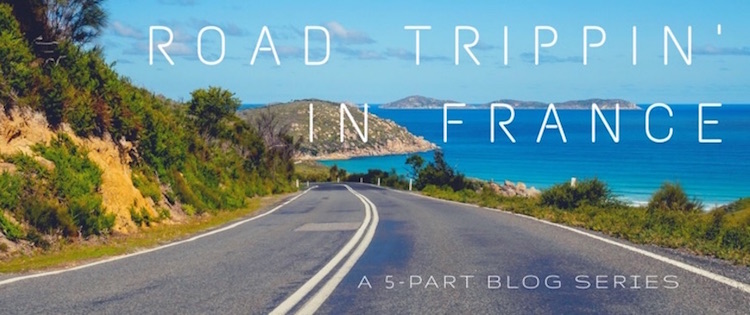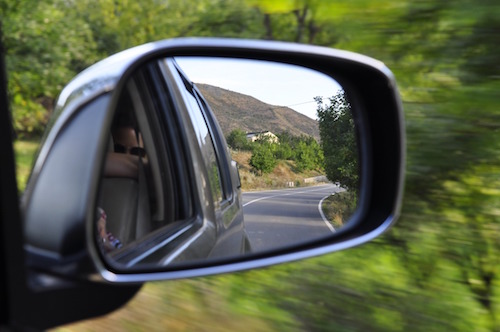Road Trippin’ Across France – Introduction
France is a great place to do road trips. The roads are nice and easy to navigate, drivers are generally courteous, and the countryside between cities is absolutely gorgeous. To date, I’ve done about five road trips across various parts of France, and there’s definitely more left to do. Here are some of my favorite drives in France and destinations by car, followed by some tips on road tripping in France.

NOTE: This is part 1 in a multi-part series on road tripping in France. Be sure to check out the other parts detailing other French road trips linked below. And definitely don’t miss the awesome dashboard video montage I compiled of me road tripping across the French countryside, linked below here and also following each article in this series.
Featured Road Trips Across France:
Click and read through each of these parts of this series for detailed accounts of my favorite road trips around France so far. All articles are also linked at the bottom of every other article so you can continue the journey onward at the end of each piece.
-
Road Trip 1: Paris to Monaco
-
Road Trip 2: Tour de Bordeaux
-
Road Trip 3: Toulouse to Andorra and Back
-
Road Trip 4: Toulouse to Nice
Tips for Road Trippin’ in France:
- France has most of the same rental car agencies as the United States (Avis, Budget, Enterprise, Hertz, Dollar, Thrifty, etc.) and also a few more (Sixt, Europecar, Firefly, etc.).
- European divisions of American rental car companies are often associated but distinct entities, meaning some benefits and policies may be the same while others are not. For example, the American version of the company may allow you to switch a car out mid-rental while the European version may not (I won’t make that $150 mistake again). Another example is that your elite status may entitle you to upgrade to any car on the lot at American locations, while a European location may only upgrade you one notch or not at all.
- The default transmission type in Europe is going to be manual for most car types, especially at the economy and intermediate booking levels. If you need an automatic, you’ll need to book a car type that specifies automatic or contact the rental car counter (not the general number but the specific location where you’ll pick up the car) to make sure they will have an automatic available and can assign it to you. I’ve had to do this almost every time I’ve rented in Europe, but every time they’ve been able to find an automatic for me and usually (but not always) at no extra cost.
- It’s really important to make sure your rental is fully insured when driving in Europe. Laws on fault, evidence, and liability can vary in Europe, and you don’t want to risk being delayed or even detained because of an accident.
- Built-in GPS is your best friend in Europe. Sure, most smart phones have good maps and voice navigation, but it’s much easier when it’s built into your dashboard than having to look down at your phone so often, especially in cities and when traffic is heavy.
- Roads and highways in Europe are well marked and easy to read, even if the words are in a language you don’t speak. Take the time to google the common road signs in the country you’re driving in and you’ll have no issues at all navigating.
- Toll roads are ubiquitous in many parts of Europe, so expect to pay anywhere from 10-30 Euros for a cross-country road trip. Having a supply of 5-10 Euros in coins in the car is helpful, but most toll booths also take cards, including American bank cards. Just make sure you note the signs above the toll lanes that indicate with graphics whether it’s cash only, fast-pass only, or cash plus cards. Cash is usually depicted as round coins and cards as rectangles since bills would look too similar to cards.
- Perhaps more ubiquitous as tolls in Europe are an even more expensive villain – speed cameras! There are always signs warning of an upcoming speed camera zone, which can span for dozens if not hundred of kilometers, although the signs range from obvious to subtle. If you get a ticket for speeding via one of these many cameras, expect the authorities to use your license plate number to track down the vehicle owner (the rental car company) and then request the driver identity from said owner. The rental car company will then automatically charge you a processing fee and turn over your info to the authorities, who may or may not then mail you a ticket. I’ve found that in some countries they don’t find it worth it to actually follow up and issue the ticket for foreigners, whereas in others they definitely do. I recently got a 300 Euro ticket in the mail from one country!
- Even more ubiquitous in Europe than speed cameras are traffic circles. Some people hate these, but I happen to love them. They allow drivers to make turns or go through an intersection without always having to come to a complete stop unless a car is coming in the circle, in which case they have the right of way. But if you want to drive in Europe, get used to these. They’re everywhere.
- Watch out for signs about upcoming construction and lane closures on roads and highways. I’ve found that in the United States the warnings tend to span greater distances and give you more time to change lanes or merge. In Europe, however, the lane often ends exactly or almost exactly where the signs start. So if you’re cruising along and see a move-over sign ahead, change lanes immediately or slow down until you can because the closure will likely come up much quicker than you’re used to.

An array of typical road signs you’ll encounter on a road trip across France.



